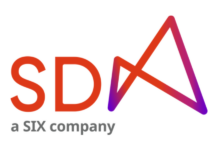By Flora McFarlane.
Block-trading venues will multiply under MiFID II creating new challenges for buy and sell side say market observers. Venues trading in smaller sizes will be axed under new rules, creating demand for more effective large-in-scale (LIS) trading.
“Everyone is now looking for blocks as a way to continue that business,” says Anish Puaar, European Market Structure analyst at Rosenblatt Securities. “The next challenge for brokers working orders on behalf of the buy side, is how to interact with block venues in a way that is smart and maximises access to liquidity.”
The new rules will create a more stratified approach to non-disclosed or dark trading, by limiting the use of waivers for pre-trade transparency. LIS trading will still be able to trade in the dark, but trading that takes place under the reference price waiver will be limited by caps based an 8% of overall volume and 4% of trading a single stock on a venue.
Currently, 16 dark order books process over 400 million trades average daily volume across Europe, using the reference price waiver and the LIS waiver. The number using the LIS waiver is predicted to increase when MiFID II comes into effect in January 2018.
Greater fragmentation and complexity in the market, with the onus falling on traders and brokers to develop strategies to navigate them, at the point when all of MiFID II comes into effect, may create considerable stress.
Dave Howson, chief operating officer of market operator BATS Europe, says, “Not all block trading mechanisms are equal and you need to work out what the offering is and how that suits your investment and trading objectives.”
Delays to publication of trades are based on specific average daily turnover of the specific equities. Consequently specific venues may target certain sizes of trades.
“Under MiFID II, blocks can be between €15,000 to €650,000, depending on a stock’s average daily volume” says Puaar. “Established venues like Posit and Liquidnet have average trade sizes that are closer to €1 million. These venues are already established and could form part of a two-tier block market alongside the newer, electronic block venues that have been launched in response to MiFID II.”
A major challenge will be assessing the new landscape, in order to work out where liquidity is. Placing conditional orders on multiple venues allows traders to test the water and build a picture of liquidity. Conditional orders, which allow multiple order placements of a block, to be cancelled as soon as one of the venues successfully fills the order do have restrictions.
One market practitioner, speaking on condition of anonymity, said, “If you take your order out or if you find the match but you can’t read your order, then you get scored down for it in the block venue. If you get scored down too many times then you are not allowed to use that block venue anymore, so it’s all about creating strategies that help you to deal with those rules and scoring systems.”
Howson adds “Some venues are very draconian about blocking people, while others have a more graduated scheme which is based on behaviour over time.”
©Markets Media Europe 2025












